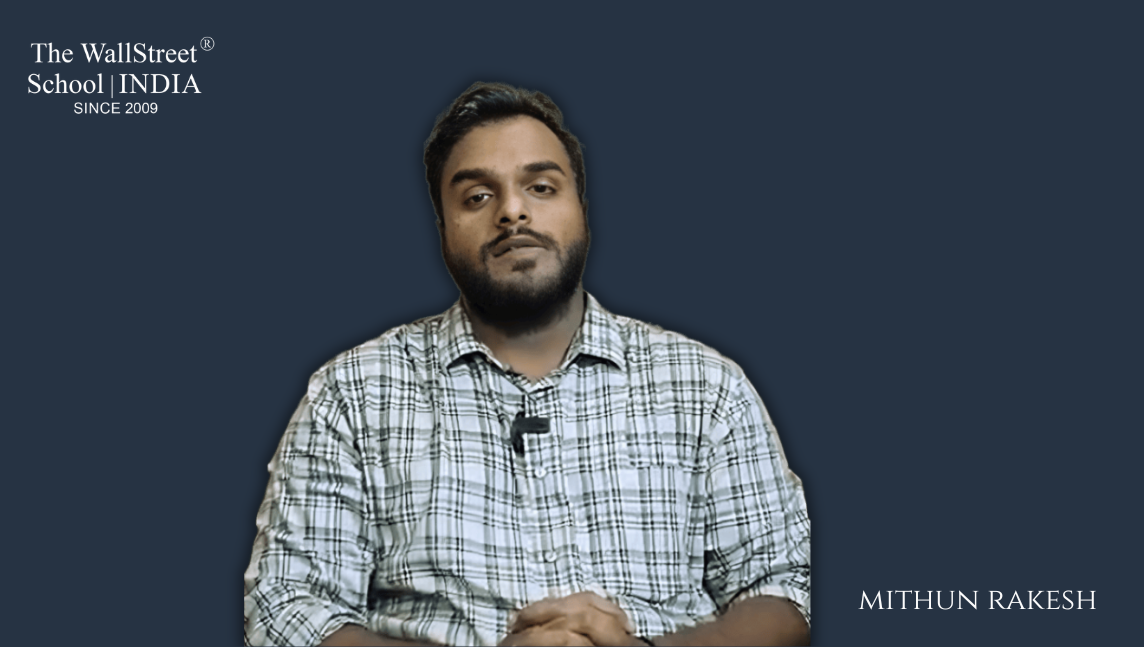Meet Mithun Rakesh, a storyteller who once believed pictures could say everything. During college, while most of his peers prepared for corporate careers, Mithun gravitated toward cinema, theatre, poetry — and above all, photography. After completing his B.Com, he joined Wipro in a finance role and spent three years there. The job was stable but it didn’t ignite his passion. Photography did.
Mithun made a bold choice: he left Wipro, completed a Diploma in Photography and even exhibited his work at a Delhi gallery in a show called Safarnama. It felt like a dream — but reality soon set in.
Freelancing proved unstable, and full-time photography opportunities were rare. Many creative agencies offered unpaid internships or minimal stipends. After months of trying, financial pressure grew. Mithun paused and reflected. He realized he already had a valuable foundation: experience in finance. So he decided to return — this time, better prepared and focused.
He enrolled in a Financial Modeling and Valuation course and committed himself to rebuilding his finance career. What followed were months of steady effort, re-skilling, and quiet determination.
Here is Mithun’s journey, in his own words…
In Conversation with Mithun Rakesh
Q: Your background is so unique. What finally made you switch from photography to finance?
Ans. To be honest, the switch wasn’t easy. I had poured myself into photography — a diploma, a diverse portfolio, and an exhibition. But paid opportunities were scarce. I remember travelling across the city for a meeting where I was kept waiting for two hours — only to be told the role was an internship with a very small stipend. Freelancing wasn’t taking off either.
That evening I looked through my old resume. I had a PGDBM in finance. I had already worked in finance at Wipro for three years. I told myself maybe it’s time to go back and give it another proper shot.
Q: What did you do to get back into the finance space?
Ans. I knew I couldn’t just apply with an old resume. I had to show that I was updated with current finance skills. That’s why I enrolled in a Financial Modeling course. It helped me build models from scratch and really understand how companies are valued.
One of our assignments involved valuing an FMCG company using DCF. It sounded difficult at first. But we did it step by step. Once I understood how to forecast revenue, calculate free cash flows and bring it all into a working Excel model, it started making sense. I could finally see how financial decisions are actually made in real companies.
Q: After completing the course, did interviews come easily?
Ans. Not at all. That was the tough part. After finishing the course, I applied through the placement portal and other websites. But for weeks, I didn’t get a single interview call. It was disheartening.
Then one day, I finally got shortlisted. I was excited but nervous. The interview didn’t go well. I messed up a question about ESOP’s. The interviewer asked me to explain how it affects valuation and I fumbled a lot. They never called back. I felt embarrassed but also realised I needed to practice more.
So I started preparing better. I would call my colleagues from my previous company who were already in core finance roles. I remember taking mock interviews with them and they challenged me with tricky but conceptual questions. The same activity I did with my peers from the FM&V batch. We practiced and tested each other’s knowledge for different concepts in core finance and valuation. Not only this, my trainers even helped me by practicing mock interviews that really gave me a better understanding. Slowly, I began clearing technical rounds.
Q: Sounds like progress. What was still holding you back?
Ans. Even after clearing technical rounds, I kept getting rejected in the final HR or fitment rounds. One company said they needed someone with consistent finance experience. Another said I was “too creative” for the role. That confused me. I started thinking maybe my photography background was working against me.
There was a point when I took a break from applying. I needed time to get my confidence back. But instead of quitting, I started doing small projects on my own. I tried building a model on a tech startup I personally liked. It wasn’t part of the course or any job requirement. But doing it gave me clarity and I learned more than I expected.
Q: How did you finally crack the job at AIS?
Ans. The opportunity came through the placement cell — I applied without overthinking and, to my surprise, got shortlisted. The role was Operations — Bankruptcy, and in the technical round they tested my understanding of bankruptcy and mortgage concepts. I tried to stay calm, broke each concept down clearly, and answered follow-ups as they came; that confidence made a real difference.
In the final HR round I spoke openly about my journey — from Wipro to photography and then back to finance — and I think that honesty and clarity resonated with them. I was offered the role the same day; I remember calling Himanshu Sir and Puneet Sir from the placement cell and sharing the news with a mix of relief and joy.
I owe this to the deep conceptual clarity I gained from the course and the constant push from my peers, friends and mentors. They helped me look beyond formulas and truly understand why things work, which gave me the confidence to get the job.
Q: What would you say to someone else who is stuck between two careers?
Ans. I would say don’t be afraid to explore what excites you. I have no regrets about choosing photography. It taught me patience, observation and storytelling all of which surprisingly help in finance too.
But if you are switching careers, be prepared to put in double the effort. People might not understand your journey and that’s okay. You just have to keep learning, keep improving and most importantly, keep showing up. Eventually, someone will give you a chance. And that one chance can change everything.
Mithun’s journey may not have been linear, but it was real. From switching careers to facing silent inboxes and bouncing back after every rejection, his story shows how growth happens quietly through patience, self-reflection and relentless effort. Whether it was building models late at night or rewriting his resume for the tenth time, he kept showing up. And that is what made the difference. Small steps, done consistently, have a way of turning into something bigger.
You can connect directly with him here: https://www.linkedin.com/in/mithun-rakesh/



